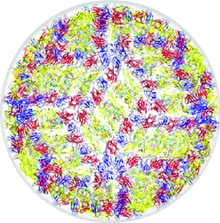From One Cell to Insight: How Single-Cell Sequencing is Transforming Biology
- Start Date:- 2024-09-20
- End Date:- 2024-09-20
- Start Time:- 15:58:00
- End Time:- 17:58:00

Event Information :
The term "single cell" refers to an individual cell examined in isolation. Analysis performed specifically on such individual cells is known as single-cell sequencing analysis, while the process of sequencing these isolated cells is termed single-cell sequencing. In contrast, sequencing multiple cells or groups of cells does not fall under single-cell sequencing. For example, standard genetic sequencing often involves extracting specific DNA fragments from minimally processed blood. However, this method does not clarify whether the extracted DNA comes from a specific white blood cell, another white blood cell, or free DNA circulating in the bloodstream. Similarly, conventional tumor studies typically involve sequencing numerous tumor cells isolated from tumor tissue. Single-cell sequencing in oncology is a specialized approach; most sequencing efforts do not operate at the single-cell level.
To fully understand the technical aspects and benefits of single-cell sequencing, it's important to grasp the precise meanings of terms like "single-cell sequencing" and "high-throughput technology," especially when prefixed with "single cell" or "high-throughput."
The key advantage of single-cell sequencing lies in its ability to reveal cellular heterogeneity. This concept highlights the variability among individual cells, even within the same tissue, which can lead to differences in gene expression and other characteristics. Traditional studies that analyze cell populations provide averaged results, potentially obscuring these individual differences. Here are two specific examples:
Cell Classification: Traditionally, cell classification relied on spatial position and morphology, which offers a relatively broad categorization. Single-cell RNA or DNA sequencing allows for a more detailed and accurate classification of cells, especially in complex tissues, providing a deeper understanding of cellular functions.
Tumor Studies: A widely accepted theory of tumor metastasis suggests that certain cells from a tumor may detach, enter the bloodstream as circulating tumor cells (CTCs), travel to an organ, invade blood vessels, adhere, and proliferate to form new tumors. Identifying which cells from the original tumor become CTCs, determining which CTCs can survive in the bloodstream, and understanding the complete process of tumor metastasis require single-cell level sequencing and related research.
In summary, single-cell sequencing has significantly advanced our understanding of cellular biology by uncovering the complexities of cellular heterogeneity. This method provides insights into individual cells that are often masked in population-level analyses. It holds substantial potential for enhancing our knowledge of basic cellular functions and transforming our understanding of diseases like cancer. As single-cell sequencing technologies continue to evolve, we can expect even greater breakthroughs, unlocking new possibilities in biological research and clinical practice.
Register at
free
From One Cell to Insight: How Single-Cell Sequencing is Transforming Biology
- Start Date:- 2024-09-20
- End Date:- 2024-09-20
- Start Time:- 15:58:00
- End Time:- 17:58:00

Event Information :
The term "single cell" refers to an individual cell examined in isolation. Analysis performed specifically on such individual cells is known as single-cell sequencing analysis, while the process of sequencing these isolated cells is termed single-cell sequencing. In contrast, sequencing multiple cells or groups of cells does not fall under single-cell sequencing. For example, standard genetic sequencing often involves extracting specific DNA fragments from minimally processed blood. However, this method does not clarify whether the extracted DNA comes from a specific white blood cell, another white blood cell, or free DNA circulating in the bloodstream. Similarly, conventional tumor studies typically involve sequencing numerous tumor cells isolated from tumor tissue. Single-cell sequencing in oncology is a specialized approach; most sequencing efforts do not operate at the single-cell level.
To fully understand the technical aspects and benefits of single-cell sequencing, it's important to grasp the precise meanings of terms like "single-cell sequencing" and "high-throughput technology," especially when prefixed with "single cell" or "high-throughput."
The key advantage of single-cell sequencing lies in its ability to reveal cellular heterogeneity. This concept highlights the variability among individual cells, even within the same tissue, which can lead to differences in gene expression and other characteristics. Traditional studies that analyze cell populations provide averaged results, potentially obscuring these individual differences. Here are two specific examples:
Cell Classification: Traditionally, cell classification relied on spatial position and morphology, which offers a relatively broad categorization. Single-cell RNA or DNA sequencing allows for a more detailed and accurate classification of cells, especially in complex tissues, providing a deeper understanding of cellular functions.
Tumor Studies: A widely accepted theory of tumor metastasis suggests that certain cells from a tumor may detach, enter the bloodstream as circulating tumor cells (CTCs), travel to an organ, invade blood vessels, adhere, and proliferate to form new tumors. Identifying which cells from the original tumor become CTCs, determining which CTCs can survive in the bloodstream, and understanding the complete process of tumor metastasis require single-cell level sequencing and related research.
In summary, single-cell sequencing has significantly advanced our understanding of cellular biology by uncovering the complexities of cellular heterogeneity. This method provides insights into individual cells that are often masked in population-level analyses. It holds substantial potential for enhancing our knowledge of basic cellular functions and transforming our understanding of diseases like cancer. As single-cell sequencing technologies continue to evolve, we can expect even greater breakthroughs, unlocking new possibilities in biological research and clinical practice.
Register at

